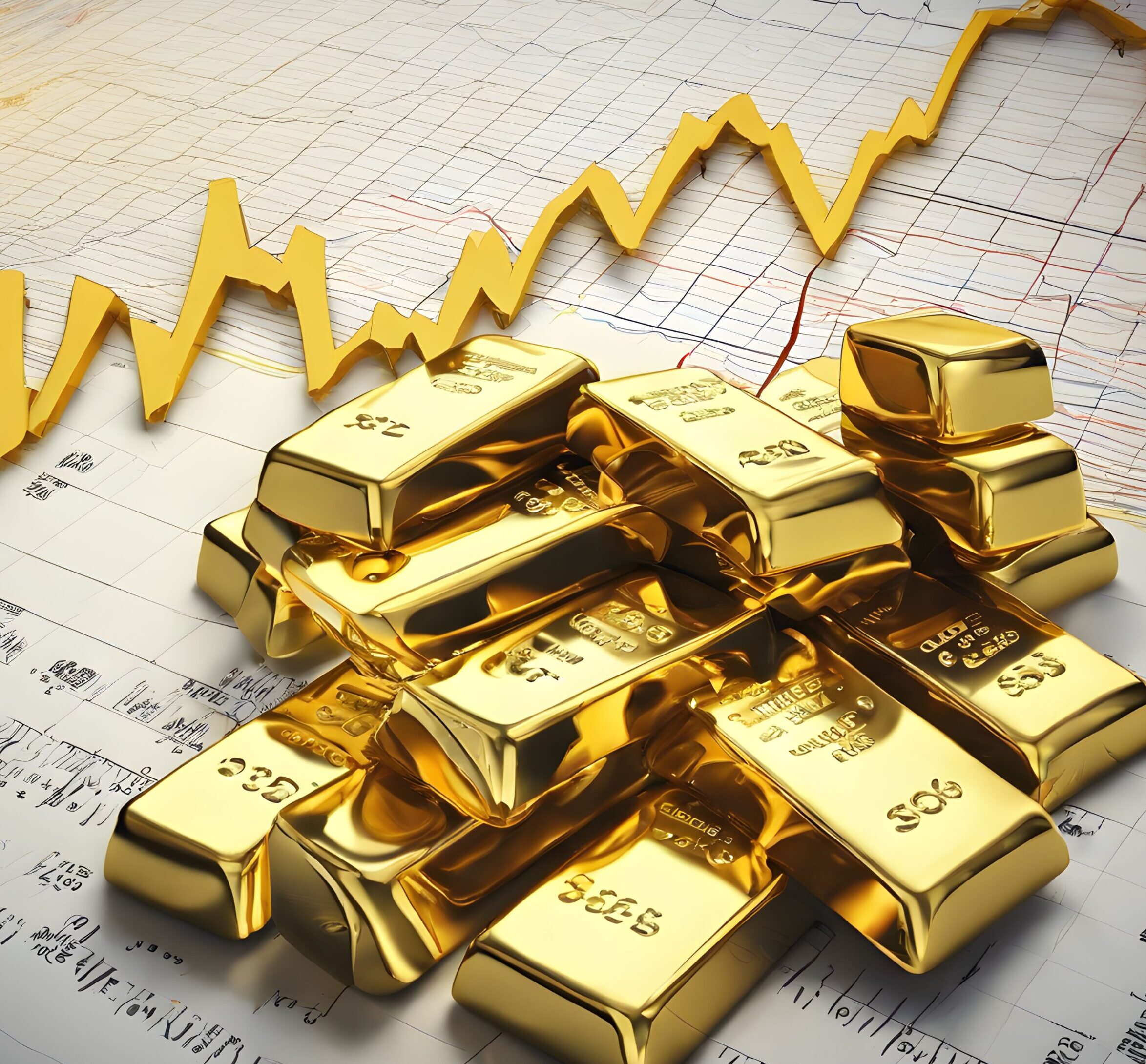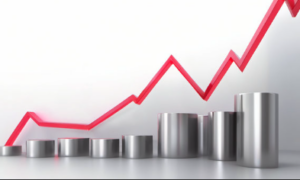
As the global economy transitions into 2025, key economic indicators are once again taking center stage, especially with respect to inflation, jobs data, and the impact these factors have on critical financial assets such as gold, silver, and EUR/USD. The performance of these assets has always been closely tied to economic data, and the recent economic indicators of January 2025 have significantly influenced market sentiment.
Gold and silver, being precious metals, tend to react strongly to inflationary pressures and economic instability, while the EUR/USD currency pair offers insights into the relative economic strength between the Eurozone and the United States. The U.S. jobs data, along with global inflation trends, have far-reaching implications for these assets.
In this article, a detailed analysis will be presented on how the latest economic data—focusing on inflation and job growth—affects the technical aspects of gold, silver, and EUR/USD, based on the latest market data from January 2-6, 2025. We will explore the latest technical trends for each of these assets, their historical performance, and their outlook moving forward.
Gold Market Analysis
Recent Trends and Price Movements
Gold has continued its upward trajectory into the start of 2025, trading at $2,635.39 per ounce as of January 6. The current trend reflects gold’s appeal as a hedge against inflation and geopolitical instability. While there have been slight fluctuations, the long-term uptrend remains intact as economic uncertainty and inflation fears persist. The price of gold surged in 2024, peaking in the second half of the year as concerns over global inflation, particularly in the U.S. and Eurozone, pushed investors to seek safe-haven assets.
The price of gold is inherently linked to inflation. Traditionally, as inflation rises, the value of fiat currencies decreases, prompting investors to buy assets like gold, which are considered stores of value. As of early 2025, inflation is still well above the historical norm in major economies like the U.S., making gold increasingly attractive.
The U.S. Federal Reserve’s stance on interest rates is another factor influencing gold’s performance. As the Fed raises rates to curb inflation, it can reduce gold’s appeal because the metal does not yield any income. However, if the jobs report shows weaker-than-expected employment growth, the market may expect the Fed to slow or pause its rate hikes, which could further fuel demand for gold.
Technical Indicators
When analyzing gold from a technical perspective, several indicators suggest a bullish outlook. First, the Relative Strength Index (RSI) is hovering around 55, which is considered neutral but points toward a slight bullish trend. While the RSI is not in overbought territory, it is nearing the upper threshold, which suggests a potential for further upward movement if demand continues to rise.
Gold is also above both its 50-day and 200-day simple moving averages (SMA). The 50-day SMA is currently acting as strong support, while the 200-day SMA indicates the longer-term bullish trend. A strong breakout above the $2,650 level could confirm continued upside momentum, potentially reaching new highs for the year.
Market Outlook
Looking ahead, gold’s outlook will depend heavily on the release of U.S. economic data. If the jobs report reveals weaker-than-expected employment numbers, this could lead to a dovish response from the Federal Reserve, which would be positive for gold. Conversely, strong employment data might suggest that the U.S. economy is on solid footing, possibly leading to higher interest rates and a pullback in gold prices.
Moreover, global inflation data will continue to play a pivotal role. Higher-than-expected inflation could further solidify gold’s position as a hedge against rising consumer prices. Additionally, geopolitical tensions, such as conflicts or trade disruptions, could also drive investors into the precious metal.
Silver Market Analysis
Price Movements and Trends
Silver, like gold, is considered a safe-haven asset during times of economic uncertainty. However, it has a more volatile nature due to its industrial applications. In early January 2025, silver is trading just below the 200-day SMA at around $29.30 per ounce, showing some consolidation after a strong 2024 performance. Silver’s price tends to fluctuate more significantly than gold, as it is influenced by both inflationary pressures and industrial demand.
Over the past several months, silver has been range-bound, struggling to break through the $30 resistance zone. Investors are closely watching the technical levels of $28.90 (support) and $29.80 (resistance). A break above $29.80 would likely trigger further bullish sentiment, whereas a drop below $28.90 could signal a bearish reversal, especially if there are concerns about weaker demand from industrial sectors.
Technical Indicators
Silver’s technical indicators reveal a mixed picture. The RSI for silver has been hovering around the 50 mark, which indicates indecision in the market. This level suggests that neither the bulls nor the bears have gained full control, and silver may continue to trade within a range until a clear direction is established.
Silver’s position relative to its moving averages shows some caution. While the metal remains above the 50-day SMA, it is not far from testing the 200-day SMA, which could act as a major support level. The 200-day SMA is currently at $28.60, and a test of this level could offer buying opportunities for investors looking for a potential rebound.
Implications of Jobs Data
Similar to gold, silver’s performance is closely tied to jobs data and inflation. A strong U.S. jobs report could lead to increased interest in the U.S. dollar, placing downward pressure on silver prices. Conversely, if the jobs data comes in weaker than expected, silver may benefit from heightened demand for safe-haven assets.
Additionally, inflation concerns could continue to drive silver’s upward trend, especially if the Federal Reserve signals a less aggressive stance on rate hikes in response to weak employment data. Strong inflation data would likely support silver prices as it would continue to fuel demand for precious metals.
EUR/USD Technical Analysis
Price Levels and Market Sentiment
The EUR/USD currency pair has experienced significant pressure in recent months, with the euro showing weakness against the U.S. dollar. As of January 6, 2025, the pair is testing a key support level near 1.0500. This level has been a critical point for the pair over the past few months, and a break below this support would likely result in further downside, potentially targeting the 1.0300 zone.
The relative strength of the U.S. dollar plays a major role in the performance of the EUR/USD pair. If U.S. economic data, such as jobs numbers, continues to show strength, the dollar could maintain its bullish trend, placing downward pressure on the euro. Conversely, if the jobs data is weak, the dollar may weaken, offering the euro an opportunity to recover.
Key Support and Resistance Levels
For the EUR/USD pair, key levels to watch in the short term are the support at 1.0500 and resistance at 1.0700. If the euro breaks through the resistance at 1.0700, it could signal a potential rally, particularly if inflation data from the Eurozone continues to rise. On the other hand, a sustained move below 1.0500 could indicate a bearish trend, with the next major support at 1.0300.
Economic Indicators’ Impact
Inflation and jobs data are crucial for understanding the movement of EUR/USD. If inflation in the Eurozone increases, the European Central Bank (ECB) may be forced to raise interest rates, which would support the euro. However, a stronger-than-expected jobs report from the U.S. would likely lead to a stronger dollar, putting downward pressure on the euro.
The U.S. jobs report has a direct impact on the strength of the U.S. dollar, and given the euro’s sensitivity to the dollar’s performance, the EUR/USD pair’s trajectory will depend largely on the relative economic conditions in both the U.S. and the Eurozone.
Inflation Data and Its Impact on Precious Metals
U.S. and Global Inflation Trends
As we enter 2025, inflation remains a major concern in both the U.S. and globally. While U.S. inflation has moderated slightly in recent months, it is still elevated compared to historical norms. The latest CPI data for December 2024 showed inflation at 5.3%, a slight decrease from previous months but still above the Federal Reserve’s target of 2%.
Inflation has a direct impact on precious metals, as they are considered hedges against rising consumer prices. When inflation is high, the purchasing power of fiat currencies declines, prompting investors to seek safe-haven assets like gold and silver. As inflation expectations rise, the demand for precious metals typically increases, driving up their prices.
Globally, inflation concerns are also prevalent, particularly in the Eurozone and emerging markets. In response to rising inflation, central banks are likely to adjust their monetary policies, which could affect the value of both gold and silver.
Jobs Data and Market Implications
U.S. Jobs Data and Market Sentiment
The release of the U.S. jobs report is always a critical event for financial markets. The data for December 2024 will be closely scrutinized by investors, as it could have significant implications for the Federal Reserve’s monetary policy. A strong jobs report would indicate that the U.S. economy is growing at a healthy pace, potentially leading the Fed to continue with its interest rate hikes. This would likely put downward pressure on gold and silver.
Conversely, a weaker-than-expected jobs report could signal a slowdown in economic growth, prompting the Federal Reserve to pause its rate hikes or even lower rates. This would be bullish for gold and silver, as lower interest rates would reduce the opportunity cost of holding non-yielding assets.
Global and Local Market Implications
The global economic environment, particularly the performance of major economies like the U.S. and the Eurozone, continues to play a pivotal role in shaping the outlook for gold, silver, and EUR/USD. Inflation data, jobs reports, and geopolitical events all contribute to the broader market sentiment and influence asset prices.
In particular, the continued economic uncertainty in major regions like the U.S. and the Eurozone means that investors will likely continue to seek out safe-haven assets like gold and silver. The relationship between the U.S. dollar and the euro also remains a key factor in driving the direction of the EUR/USD pair.
In conclusion, the outlook for gold, silver, and the EUR/USD currency pair in early 2025 remains highly dependent on economic data, particularly inflation and jobs reports. Gold and silver are poised to benefit from rising inflation, as investors seek out safe-haven assets. The EUR/USD pair will likely continue to be influenced by the relative strength of the U.S. dollar, driven by U.S. employment data and monetary policy decisions.
Understanding the technical trends for each of these assets will be crucial for traders and investors as they navigate the markets in the coming months. As always, staying informed on economic developments will provide valuable insights for making well-informed investment decisions.
Feel free to check out our other website at : https://synergypublish.com

